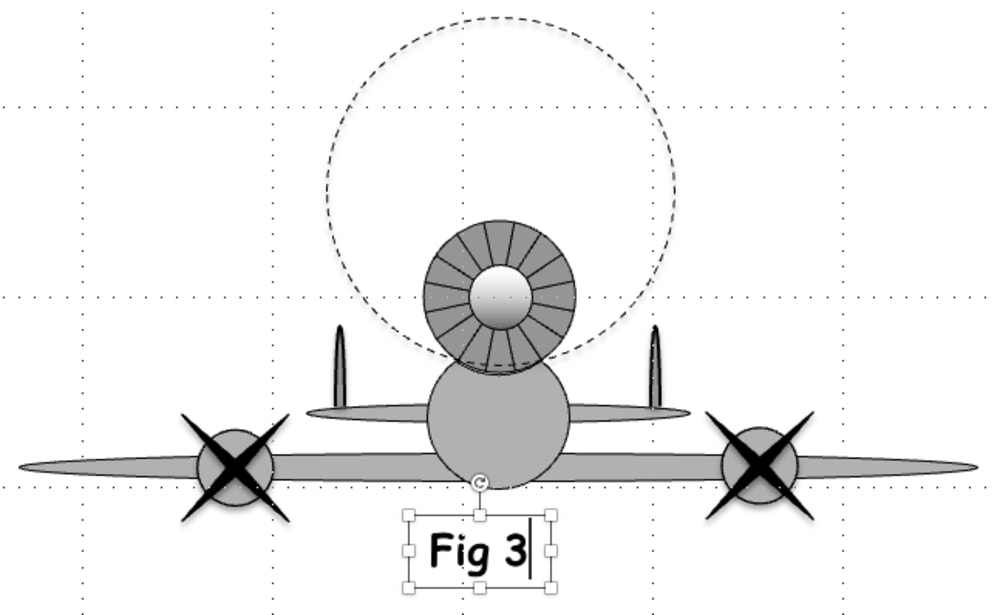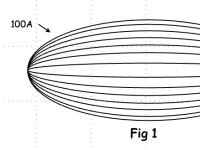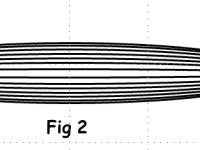The CBAG (Configurable Buoyancy And Geometry) semi-rigid airship overcomes all of the disadvantages of earlier airships. It is simpler, lighter, stronger, smaller, cheaper, and several times faster than any rigid or non-rigid air-ship of a similar load capacity.
The buoyant gas envelope is supported by a simple array of springy flexible longitudinal ribs bowed outward from the center axis in a radial pattern. This allows the buoyant gas to be kept at less than atmospheric pressure for increased lift. A simple internal tensioning device such as an electric cable winch can pull the nose and tail assemblies closer together forcing the ribs further outward, making the craft shorter and plumper as in Fig 1, greatly increasing the buoyancy to allow VTOL and hovering. When the tension is released, the ribs move inward making the craft longer and slimmer as in Fig 2. Each rib has a thin lightweight outer shell segment along its length that can interlock with adjacent segments. Thus, when configured for minimum buoyancy, the delicate envelope is completely enclosed inside its own outer shell and can travel at very high speed.
In normal operation, the CBAG airship is mated with a winged aircraft to form a hybrid as shown in Fig 3. To take off or land vertically, or to hover in place, the CBAG airship is configured for high buoyancy as indicated by the large, dashed circle. Once airborne, as the hybrid craft engages forward flight and the wings begin to provide lift, the CBAG airship is gradually configured for minimum buoyancy and high-speed flight. It is expected that airspeeds in excess of 200 knots will be achievable.
If the CBAG airship is combined with a rotorcraft such as a quadcopter to form a hybrid drone, it will be able to travel much longer distances and hover for much longer periods. In fact, if the hybrid drone is equipped with solar panels, such a device can hover in place almost indefinitely providing reconnaissance or serving as a communications relay.
A less obvious advantage of the CBAG airship is that because the semi-rigid structure fully supports the envelope and allows the buoyant gas to remain at less than atmospheric pressure, if there is ever a leak in the envelope, instead of buoyant gas leaking out, air would leak in. A miniature cryogenic system could condense and liquefy any internal air and pump it out. This feature would make it relatively safe to use low-cost hydrogen instead of scarce and expensive helium.
The patent application has received a notice of allowance and will be issued within a few weeks.
Like this entry?
-
About the Entrant
- Name:Chuck Bagg
- Type of entry:individual








